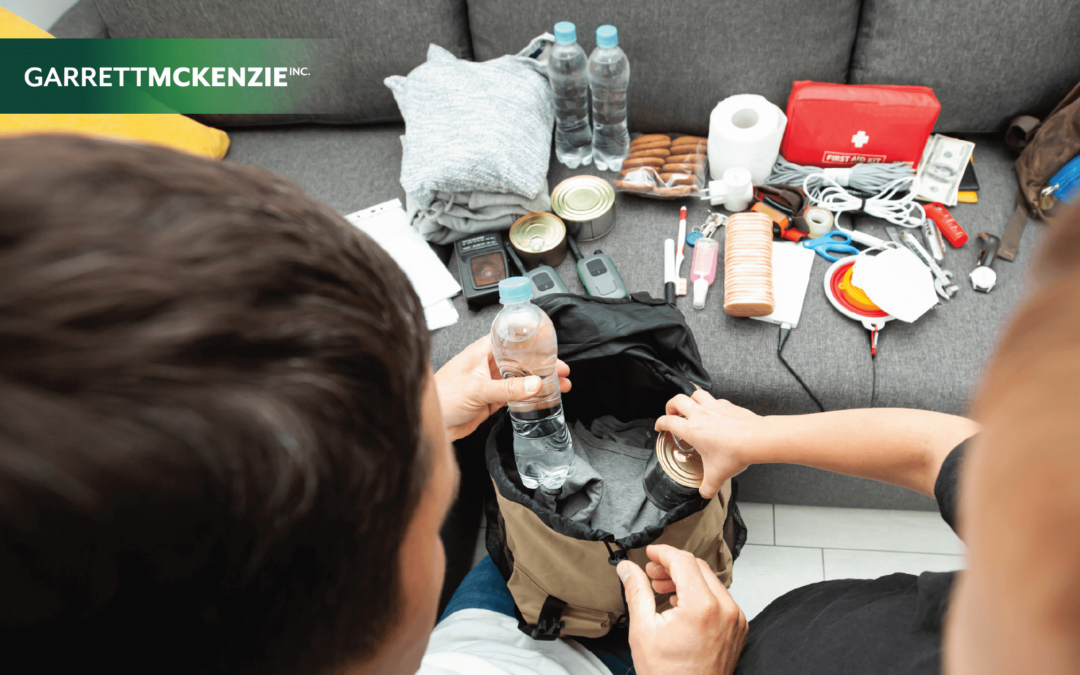Are you prepared for hurricane season? For coastal regions, this takes up half of the calendar year – running from June 1st to November 30th. Categorized by strong winds, intense storms and potential flood damage, hurricane season requires specific preparation. To protect your business, it’s essential to take proactive steps in preparing for unpredictable storms.
“History teaches that a lack of hurricane preparedness and awareness are common threads among all major hurricane disasters. By knowing your vulnerability and what actions you should take, you can reduce the effects of a hurricane disaster.”
– The National Weather Service
If you live in a region affected by hurricane season, here are 7 supplies we suggest keeping on hand:
1) Food and Water
Although this seems like common knowledge, supplies will become limited after a hurricane warning is issued. It’s recommended to have a 3-day supply of non-perishable, easy-to-make food (doesn’t require electricity) and a gallon of water per person per day. For example, if you have people in your building you will need at least 9 gallons of water for 3 days.
2) Emergency Preparation Kit
For a business, it’s important that you have more than a first aid kit accessible. While general first aid supplies should be included, your emergency preparation kit should also include:
- Blueprints for key facilities
- An emergency contact list, including contact information for the fire and police departments, psychologists, trauma specialists, etc
- Sanitation supplies
Ensure employees know where the kit is located and how to access it in emergency situations.
3) Battery-Powered Radio
Most people use their cell phones for weather updates and consider them a reliable source for weather-related information. However, it’s easy to forget that mobile devices, like cell phones, wireless routers and cable modems, all require power. Even if a cell phone still has battery life after a storm, the closest cell tower may not. A battery-powered radio ensures storm-related information such as storm updates and relief efforts can be accessed for a prolonged period of time.
4) Flashlight
Power outages can last for days, sometimes even weeks. Flashlights for each employee working during a shift will assist with the power outages. It’s also advised to use flashlight lanterns, as they are a safer option than candles for the common areas in your business or office.
5) Extra Batteries
When power lines are down, batteries become your lifeline power source. With multiple devices (like flashlights and battery-powered radio) using battery power, it’s wise to keep a stockpile of batteries on hand. It’s suggested to keep a variety of batteries that are utilized throughout your office.
6) Plywood and Tarps
Boarding up windows and non-emergency exit doors to protect glass from shattering and storm or rain waters flooding the building. Roof tarps can prevent water from leaking inside and limit the overall damage.
7) Sandbags
Hurricanes bring widespread flooding. Having sandbags properly placed in doorways can drastically reduce the amount of water that may get inside during flooding. Sandbags can also be used to hold down tarps to create a better seal.
Remember, hurricanes are one of the fiercest displays of nature’s power causing significant damage. The supply checklist listed above will assist in protecting your assets during hurricane season.
For more helpful information about disaster recovery, sign up for our monthly emails!



Recent Comments